Fotowettbewerb 2022 "Meine Forschung in einem Bild"
Wie lässt sich die eigene Forschung der breiten Öffentlichkeit gelungen vermitteln? In den zwei Wettbewerben „Meine Forschung in einem Bild“ und „Meine Forschung in einer Grafik“ stellten sich Nachwuchswissenschafter*innen der Universität Wien dieser Herausforderung. Die Gewinner*innen wurden am 27.06. im Rahmen der Arts&Science Veranstaltung bekannt gegeben.
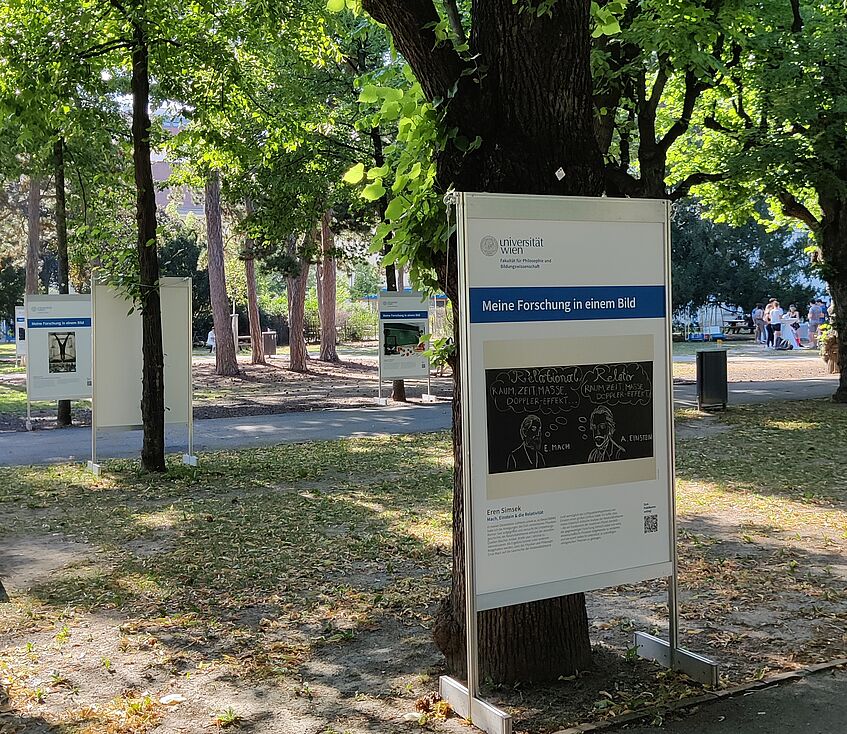
Bereits zum achten Mal veranstaltete die DLE Forschungsservice und Nachwuchsförderung den Fotowettbewerb und zum dritten Mal den Infografikwettbewerb. Die Wettbewerbe richteten sich an Nachwuchswissenschafter*innen aller Disziplinen der Universität Wien, mit dem Ziel, diesen die Gelegenheit zu geben, ihre Arbeit bekannter zu machen und breitenwirksam zu präsentieren. Die Einreichungen der 10 Finalist*innen des Fotowettbewerbs sowie 5 ausgewählte Infografiken werden noch bis 13. Juli in einer öffentlich zugänglichen Ausstellung am Campus der Universität (Hof 1, Hauptallee) präsentiert. Am Ende des Ausstellungszeitraums wird ein Publikumspreis vergeben, über den die Besucher*innen via QR-Code auf den Postern abstimmen können.
Gewinner*innen Fotowettbewerb 2022
Die zahlreichen Einreichungen beim Fotowettbewerb wurden in einer ersten Abstimmungsrunde von der Facebook-Community auf zehn Finalist*innen eingegrenzt. Aus diesen wurden von der Jury, bestehend aus Franz Kerschbaum (Professor für Astrophysik, Institut für Astrophysik, Universität Wien), Karin Liebhart (Senior Lecturer, Visual Studies in den Sozialwissenschaften, Universität Wien), Sophie Mayr (PhD, Institut für Europäische und Vergleichende Sprach- und Literaturwissenschaft) Petra Schiefer (Öffentlichkeitsarbeit, Universität Wien) drei Gewinner*innen ausgewählt. Diese wurden von Jurymitglied Franz Kerschbaum bekannt gegeben. Der erste Preis ging an Aaron Kintzi für sein Foto „The Beauty of Science“. Den zweiten Platz machte Pamela Baur mit dem Foto „Greenhouse gas exchange of the reed belt at Lake Neusiedl“ und auf Platz drei landete Flavio Del Santo mit dem Foto „The weight of knowledge“.

1. Platz: „The Beauty of Science" von Aaron Kintzi, Centre for Microbiology and Environmental Systems Science (CMESS)
My PhD research is on the biodegradation and biotransformation of water-soluble polymers in wastewater systems. Water-soluble polymers are in many of our everyday life products such as shampoos, washing detergents or cosmetics. For applications that result in the release of water-soluble polymers into the environment, biodegradability is a desired feature. With my research, I want to deepen our understanding of the biodegradation process of promising polymers, which is needed for the development of sustainable and environmentally friendly products. The inspiration for this photo came while dissolving a polymer for an experiment.

2. Platz: „Greenhouse gas exchange of the reed belt at Lake Neusiedl“ von Pamela Baur, Faculty of Earth Sciences, Geography and Astronomy
Wetlands such as the reed belt of Lake Neusiedl can be a carbon source or sink and naturally emit methane. The reed belt is dominated by the plant species Phragmites australis and consists of a mosaic of reed stocks, sediment and water patches. With an eddy covariance measurement tower, we continuously investigate the greenhouse gas exchange of methane, carbon dioxide and water vapor between the atmosphere and the reed belt and their influencing factors. Is the reed belt a carbon source and does this change over the years? What impact have the current drought periods on the carbon and water fluxes? What is the contribution of the reed plant as a transport pathway for methane emissions? The study of these issues serves to an improved understanding of a climatically very fragile wetland ecosystem.

3. Platz: „The weight of knowledge“ von Flavio Del Santo, Faculty of Physics
During the Covid-19 pandemic, I experienced for the first time depression and isolation, which had a tremendous impact on my work too. Only then did I understand the condition of thousands of my peers, who have been experiencing mental-health issues —mostly caused by the pressure of the current academic system— long before these special times (studies show, however, that this problem was highly aggravated by the pandemic). A 2017 comprehensive research, for instance, showed that one-third of PhD students are at risk of developing mental health disorders, especially depression. Hence, although my research is in the theoretical quantum physics (see the books!), I decided to portray here the human cost that our system for the production of new knowledge (with its publication pressure, competition, career uncertainty, etc.) brings about.
Gewinner*innen Infografikwettbewerb 2021
Die Gewinner*innen des Infografikwettbewerbs wurden ebenfalls durch eine Jury gekürt, die aus Walter Longauer (APA Infografikchef), Tanja Traxler (Der Standard) und Sarah Davies (Professor of Technosciences, Materiality, & Digital Cultures, Universität Wien) bestand. Dabei überzeugte Theresa Matzinger mit ihrer Infografik „Wie verändern sich Sprachen von Generation zu Generation?“. Platz zwei ging an Julia Zwirchmayr mit der Infografik „Phytochemistry & Biodiscovery – On the Road to Bioactives“ und der dritte Platz ging an María Fernanda Cervantes Recalde für ihre Infografik „A central role of chemoreceptors in inflammatory responses of the skin.
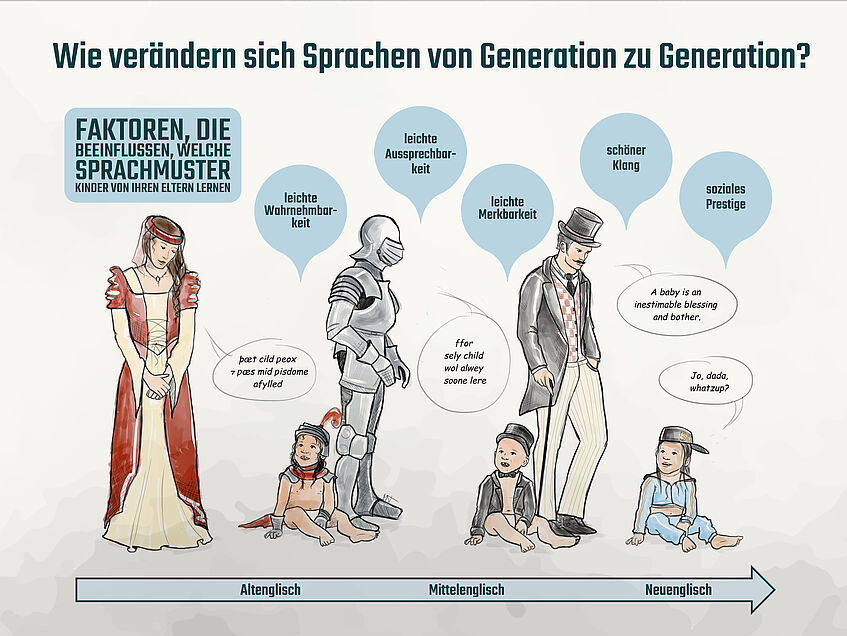
1. Platz: „Wie verändern sich Sprachen von Generation zu Generation?“ von Theresa Matzinger, Philologisch-kulturwissenschaftliche Fakultät
Sprachen sind einem ständigen Wandlungsprozess unterworfen, auch wenn diese Veränderungen den Sprecher*innen nicht immer bewusst sind. Sprachwandel hat viele Gründe: ein wichtiger Faktor ist die Weitergabe der Sprache von Eltern zu Kleinkindern. Dabei kommt es häufig zu ‘Übertragungsfehlern’, sodass Kinder aus den sprachlichen Äußerungen, die sie hören, nicht immer dieselben grammatikalischen und lautlichen Regeln ableiten, die der Sprache ihrer Eltern zu Grunde liegen. Zum Beispiel werden sprachliche Muster, die leicht aussprechbar, leicht wahrnehmbar und leicht merkbar sind, bevorzugt von der nächsten Generation benutzt. Mit der Zeit führt das, ähnlich wie beim Spiel ‘Stille Post’, zu Veränderungen in der Sprache als Ganzes. Auf diese Weise verändern sich Sprachen über Jahrhunderte so, dass sie kaum mehr untereinander verständlich sind.
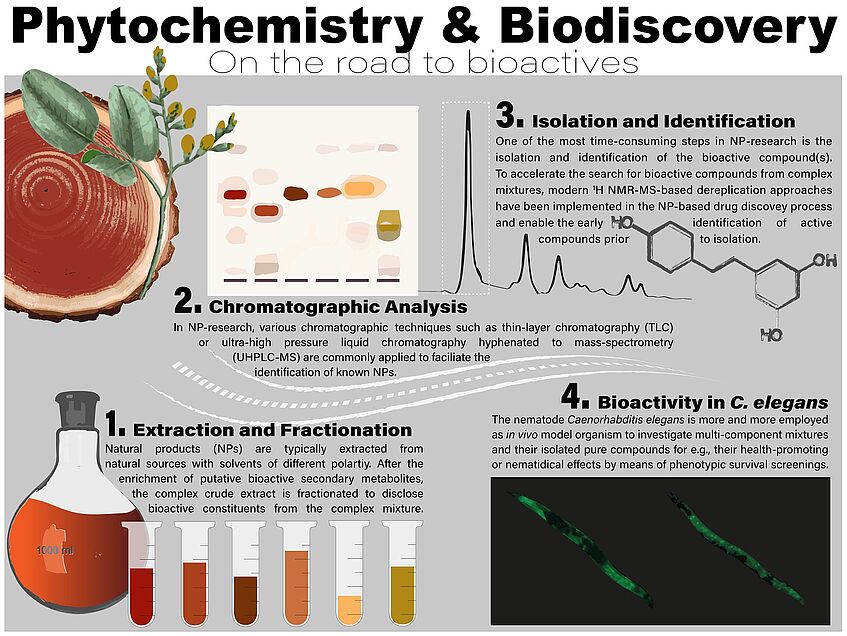
2. Platz: „Phytochemistry & Biodiscovery – On the Road to Bioactives“ von Julia Zwirchmayr, Fakultät für Lebenswissenschaften
Nature presents a remarkably diverse source of natural products (NPs) with attractive physicochemical properties, but the search for bioactive compounds from complex mixtures is a herculean task. Once a bioactive extract has been identified, one of the central challenges is to assign the bioactivity to specific compound(s) from a complex mixture. This can be rationalized through the utilization of different strategies, such as repetitive (bioactivity-guided) fractionation approaches, orthogonal chromatographic techniques and modern biochemometric approaches for the early identification of bioactives from a complex mixture. Further, as a multipurpose tool for natural compound screening, the nematode Caenorhabditis elegans is a promising model organism for the identification of NPs with health promoting and – shortening effects in vivo.
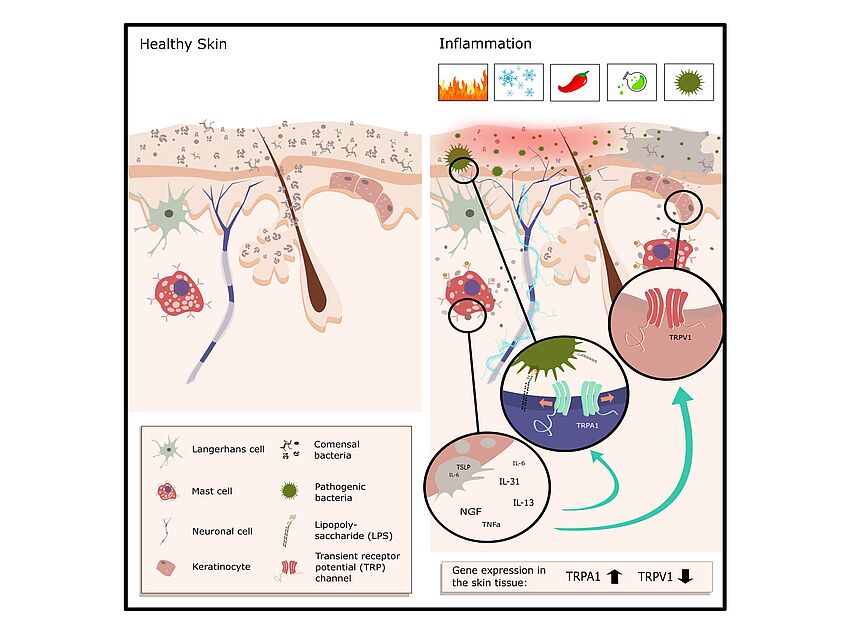
3. Platz: „A central role of chemoreceptors in inflammatory responses of the skin“ von María Fernanda Cervantes Recalde, Faculty of Chemistry
The path to skin inflammation begins with the recognition of threat by skin resident immune cells, neurons and keratinocytes. These cells promote the inflammatory response by the recruitment and activation of mast cells. Mast cell degranulation results in the release of inflammatory cytokines towards neurons and keratinocytes promoting innervation of the tissue as well as the release of anti-microbial peptides and lipids towards the skin surface. Central to the inflammatory response are transient receptor potential (TRP) channels, a type of chemoreceptor. TRP channels are directly or indirectly activated by noxious stimuli from the environment such as the inflammatory cytokines. Their activity is connected to an increased sensitivity of the tissue and they are involved in the re-establishment of epidermal homeostasis.
Die Preisverleihung und Eröffnung der Ausstellung des Foto- und Infografikwettbewerbs wurden von Brainchild musikalisch umrahmt. Das Ensemble Brainchild besteht aus dem Komponisten Adrián Artacho, dem Saxophonisten Dr. Joel Diegert und dem Cellisten Jörg Ulrich Krah. www.brainchild-music.com

Musikalische Umrahmung durch das Brainchild Ensemble.
Gewinner*in Publikumsvoting 2022
Das Publikumsvoting der Foto- und Infografik Ausstellung wurde am 11. Juli 2022 beendet. Das Bild "Not today, love, I am too stressed" von Hanna Mües hat mit einer Stimmenanzahl von 212 gewonnen.
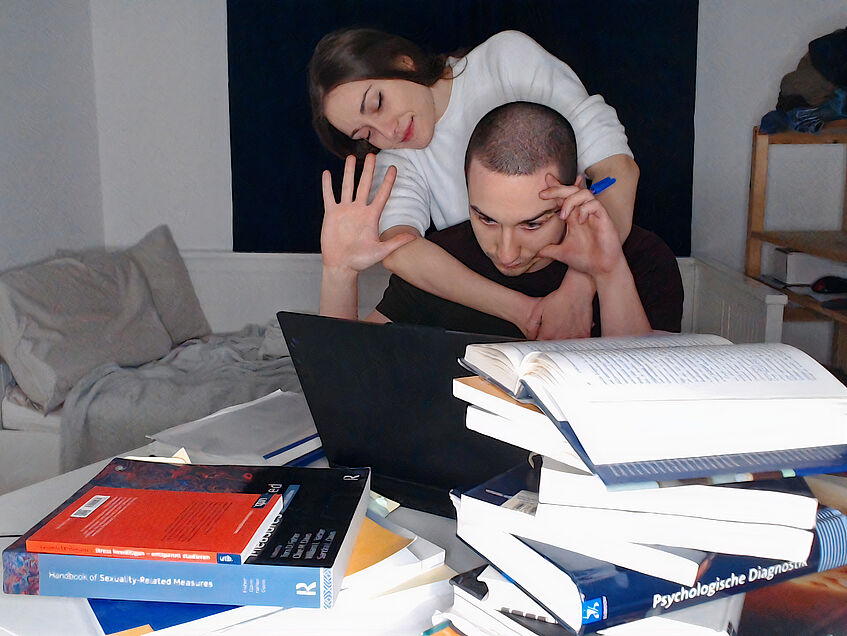
Gewinnerbild Publikumsvoting: "Not today, love, I am too stressed" von Hanna Mües, Fakultät für Psychologie
Stress is commonly assumed to decrease sexual experience and behavior. This seems reasonable, as our stress response activates the sympathetic division of the autonomic nervous system (ANS) and the hypothalamic-pituitary-adrenal-axis (HPA) leading to cortisol release, while sexual response requires both the sympathetic and parasympathetic ANS-divisions. Although low stress levels may enhance sexual processes, persistent stress may keep them slowed down to adapt the body effectively to stress. Sexual activities, however, may lead to stress relief and have been associated with health and well-being. To enhance sexual experience and behavior in daily life, I am investigating the bidirectional effects of subjective stress/cortisol and sexual experience and behavior using an ecological momentary assessment design.
